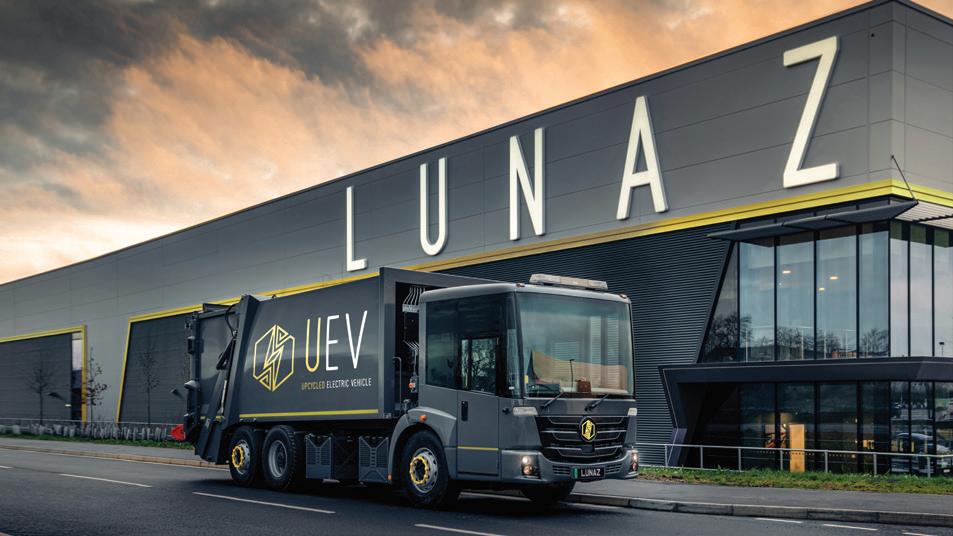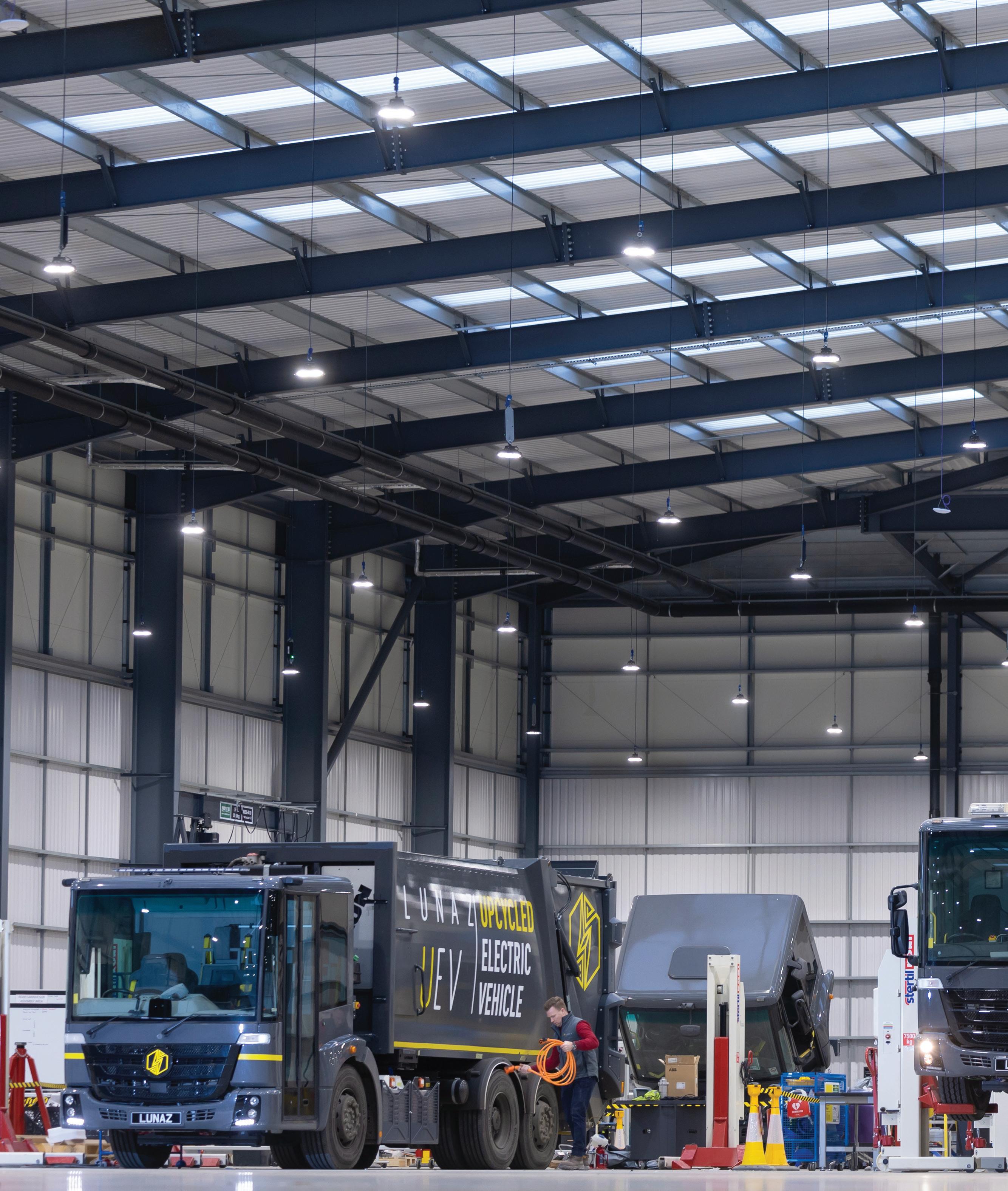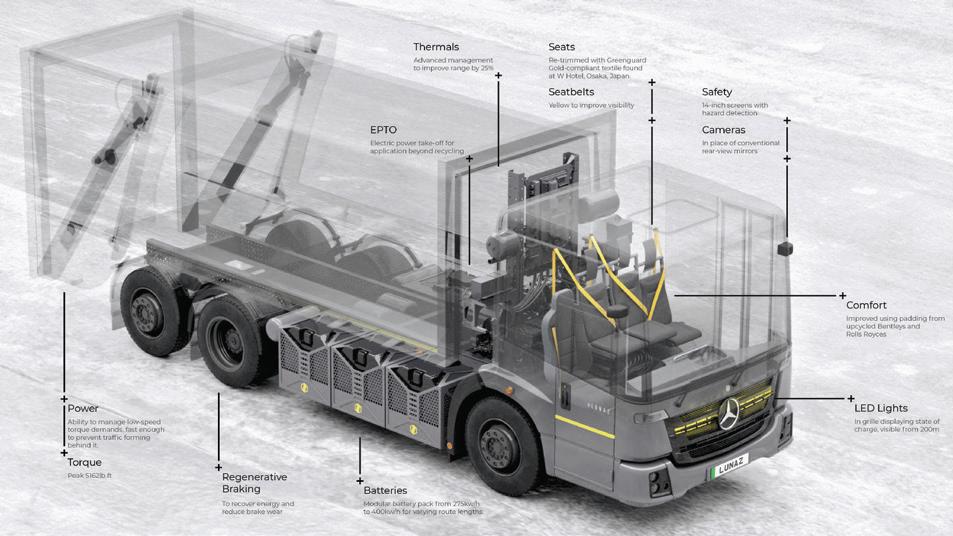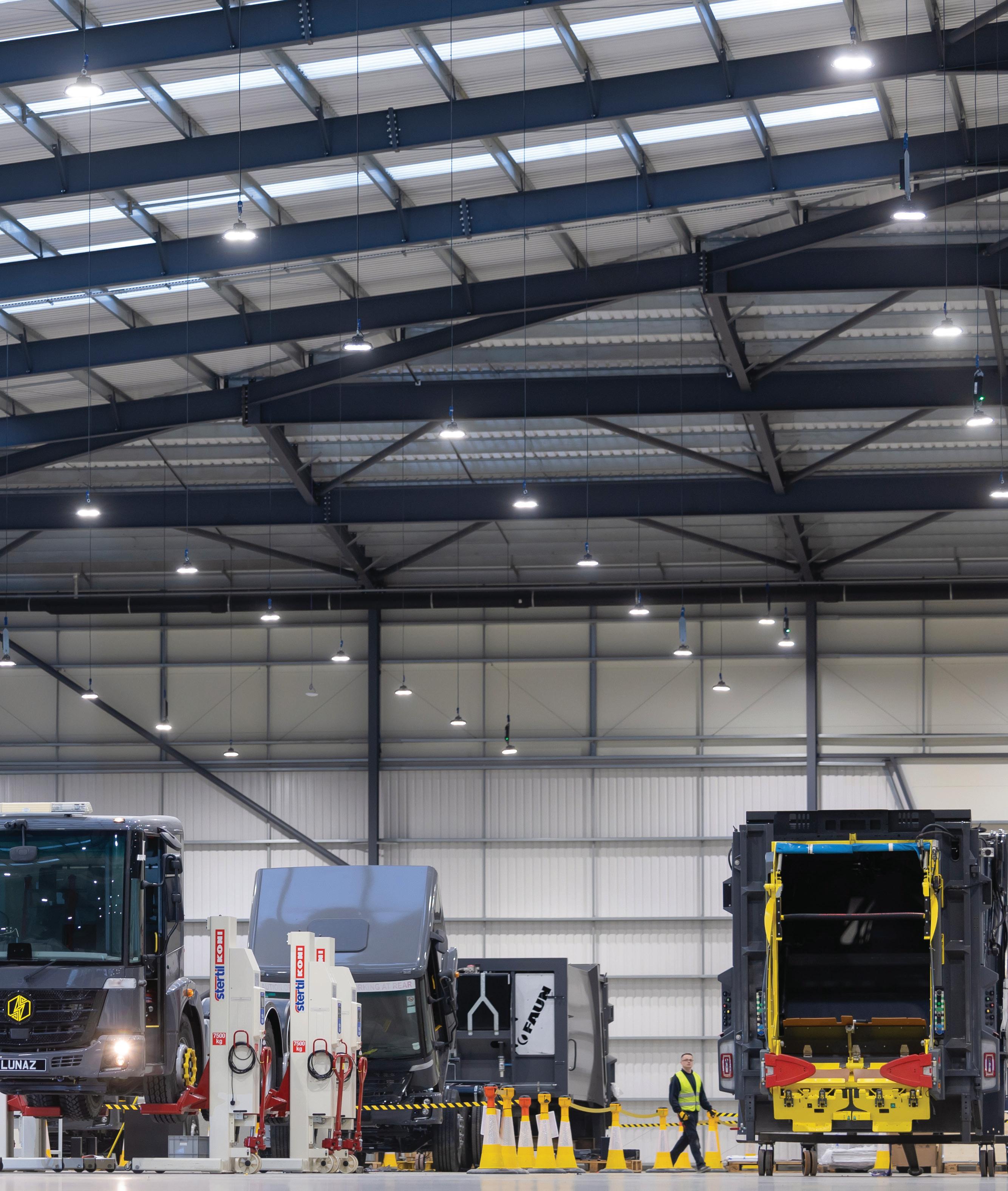
5 minute read
From Bentleys to bin lorries
Words: John Challen
It’s one thing rescuing old
Mk 1 Range Rovers, Jaguar XK120s and Rolls-Royce Phantoms for the privileged few, but for a business to grow it needs volume. Lunaz has realised this, so has expanded its electric vehicle conversion portfolio with Lunaz Applied Technologies (LAT) joining Lunaz Design.

The latter is concerned with the aforementioned classic cars – offering a bespoke service and attention to detail that is second to none. The vehicles take up to 20 months to complete their transformation, often getting to numerous locations all over the world to live their second life. LAT, which is based at a brand-new production facility in Silverstone, will cater for the conversion of refuse trucks at the end of their first lifecycle (and others beyond that, says the company). To start, the facility will see more than 1,000 vehicles run down its two production lines every year. The plan is to use it as a blueprint for other international locations, helping to ensure vehicles get to live a long and prosperous life.
David Lorenz, founder and CEO, Lunaz, has high hopes for not just the Silverstone site facility, but also the wider business model to prevent what he calls ‘carbon postboxing’ – effectively moving products to another part of the world at the end of their first life on the road. “Operators are being asked a lot of regarding meeting emissions targets and we want to enter the market and support them in the right way,” he states. “Upcycling is vital to the future of transportation – we need to put an end to the process of buying and replacing vehicles. If you reuse and recycle, you can improve things one vehicle at a time.”
Lorenz says that beyond the financial conversation, there’s a wider issue at play. “Our vehicles are probably less expensive than buying a new EV – that’s the actual key fundamental: it’s greener and a less expensive production process,” he maintains. “That means we can save local councils and taxpayers millions, which is essential, but also, the workforce get a higher quality product than many standard vehicles available on the market.
“We’re in touch with around 50 local authorities as well as most of the top 10 private waste management companies in the UK, who are compelled for a number of reasons,” he adds. “Firstly, they see us as a good technical partner and they feel we are doing things in the right way. They also see the functional advantages and technological upgrades that can be tailored to the specific requirements of their fleets. There’s also a really simple performance function as well, which is as much about our engineering as the upcycling process.”
While Lunaz Design is a project-focused business, Lunaz Applied Technologies (LAT) is designed to be a volume production operation, which means there are fewer concerns about having to seek specific components for vehicle and more worries about productivity and efficiency. The timescale from a vehicle entering the facility in its original state to going out of the door as a converted Lunaz truck is 14 days. In that time, a lot of work is done beyond taking out the engine and popping in some batteries.

“The overall goal is to improve the overall quality of the base vehicle,” says Lorenz. “Fundamentally, each refuse truck is stripped down, before all the components are assessed, the chassis is shot-blasted and then we stress test it for fractures, etc. It is then painted and rebuilt with all of the original moving components – such as air lines, airbags, suspension, brakes as new and then we start the rebuilding process because everything is done on the production line.”
Lunaz says it has adopted a modular approach when it comes to the 65.5kW battery packs being offered for the refuse truck. “We’ve gone for four different options for battery pack size because we don’t believe that it’s a ‘one size fits all’ solution, even for vehicles that might be doing the same job,” says Lorenz. “By specifying the correct capacity for the application, you are increasing the efficiency but also lowering the weight of the battery pack and vehicle overall, which improves the payload.”
The shift to EV propulsion is obviously a big step, so its encouraging to hear that with a four-battery setup, the overall gross vehicle weight is on a par with a standard ICE vehicle. A six-battery setup makes it a more expensive proposition, but also impacts vehicle payload – an important element in the commercial vehicle world, although less so with refuse collection than, say, long-haul delivery trucks.
Stepping into any electric vehicle should be a pleasant experience – and the challenge in achieving that goal in an upcycled refuse truck is one that Lunaz relishes. No, the vehicle might not have the same bespoke elements that are seen in the products that leave the Lunaz Design facility down the road, but the approach of putting the user first is paramount within the whole operation.

As such, the refurbishment process is thorough, with pipes, harnesses and other elements upgraded as well as the materials around them to prolong the life of the core components.

Inside is where drivers can expect to see the biggest differences over a standard ICE refuse truck.
“We want to reduce the friction in the industry and work with them to find solutions to make driving these vehicles easier and more enjoyable,” says Lorenz. “That approach includes replacing wing mirrors with cameras and making the centre seat of the refuse truck more comfortable because we’d had complaints from users that it was the most uncomfortable seat in the truck.”
But the creature comforts don’t stop there. The revised interior features multiple touchscreens, Apple CarPlay connectivity, camera displays and a new HVAC design featuring a fresh approach to the vents and controls, compared with the donor MercedesBenz Econic truck. An onboard thermal management system recycles the heat and turns it into extra energy for the truck, while there is the option of heated seats across all four of the spaces in the cab. Another functional improvement is the re-positioning of the handbrake to the right of the driver. Having observed fleets in action, Lunaz engineers realised that it was safer to have the control on that side, rather than in the centre. Most of the cabin plastics can be carried over, ensuring that wastage is minimised in the conversion process.

‘If it can be re-used, make sure it is,’ seems to be the big principle for Lunaz. On the outside of the truck, there are charging points at the rear, on both the left- and right-hand sides. The front grille has been fettled to include four LEDs, indicating the states of charge. They shine either green, amber or red, according to how much charge is onboard.
“What gets us really excited is how the business can scales because the remanufacturing is recorded, measured and audited,” explains Lorenz. “That means we can copy and paste factories like this around the world. And that’s how this business will grow from 1,100 units here to many more all over the world. However, this will always be its home – it’s the data engineering hub, the master facility, the blueprint!”










